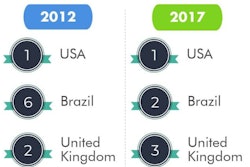
China’s pet care sector is luring local investors, not just multinationals like Nestle Purina and Mars Petcare, reported the Straits Times. For example, the chief investment officer of a Hong Kong-based fund management company said China’s pet market would be his personal top pick for 2018.
Shanghai Bridge Petcare, Sunsun Group and Navarch Petcare are three growing powers in China’s pet food market, according to the article. Yantai China Pet Foods stock rose nearly 60 percent in August 2017.
One region in particular hopes to take advantage of Chinese people’s increasing willingness to pamper their pets. In July 2016, China’s central government called upon the nation to create 1,000 specialty towns by 2020. Pingyang county, on China’s central eastern coast, aims to become a pet specialty city, reported the Straits Times.
Euromonitor International estimated that Chinese pet owners will spend US$9.6billion on their pets by 2020, with an annual growth rate of approximately 20 percent.
Humanization of pets is a key driver of this investment boom, as China’s middle and upper classes follow similar patterns to their peers around the planet. Demographic changes, including low birth rates and aging population and urbanization, have pushed the Chinese middle class to treats pets as surrogate children. As dogs and cats become family members, Chinese pet owners increasingly are willing to spend lavishly on them. Even those who don’t indulge their pets in luxuries are focusing on healthy, high quality foods.
China pet food market growth driven by global trends
China’s US$1.5 billion pet food market now includes 27 percent sales of natural products, plus 6 percent grain-free, according to Alfred Zhou, managing director of GfK China. He was the lead speaker at Petfood Forum China 2017, held August 23 in Shanghai.
Only 2 to 4 percent of Chinese households own pets, Zhou said, compared with about 65 percent in the US. That indicates the huge potential of the Chinese market, which is also characterized by rising incomes, especially among younger people who are more and more likely to own pets and to spend well on them.
For example, the average price per kilogram of pet food sold in China had increased to 48 CNY (US$7.22) as of the first quarter of 2017, up from about 40.5 CNY ($US6.08) just three years ago, Zhou said. That includes the fast-rising categories of natural and grain-free, as well as growth in ecommerce – it now accounts for nearly 48 percent of pet food sales in China – and increasing numbers and sales for domestic Chinese brands.

















